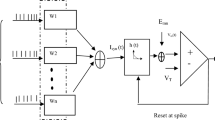Abstract
Compression distances can be a very useful tool in automatic object clustering because of their parameter-free nature. However, when they are used to compare very different-sized objects with a high percentage of noise, their behaviour might be unpredictable. In order to address this drawback, we have develop an automatic object segmentation methodology prior to the string-compression-based object clustering. Our experimental results using the xeno-canto database show that this methodology can be successfully applied to automatic bird species identification from their sounds. These results show that applying our methodology significantly improves the clustering performance of bird sounds compared to the performance obtained without applying our automatic object segmentation methodology.
Access this chapter
Tax calculation will be finalised at checkout
Purchases are for personal use only
Similar content being viewed by others
References
Albornoz, E.M., Vignolo, L.D., Sarquis, J.A., Leon, E.: Automatic classification of Furnariidae species from the Paranaense Littoral region using speech-related features and machine learning. Ecol. Inform. 38, 39–49 (2017)
Borbely, R.S.: On normalized compression distance and large malware Towards a useful definition of normalized compression distance for the classification of large files. J. Comput. Virol. Hacking Tech. 12(4), 235–242 (2016)
Cilibrasi, R., Vitanyi, P.M.B.: Clustering by compression. IEEE Trans. Inf. Theory 51(4), 1523–1545 (2005)
Cilibrasi, R., Cruz, A.L., de Rooij, S., Keijzer, M.: CompLearn Home. CompLearn Toolkit. http://www.complearn.org/
Cohen, A., Bjornsson, C., Temple, S., Banker, G., Roysam, B.: Automatic summarization of changes in biological image sequences using algorithmic information theory. IEEE Trans. Pattern Anal. Mach. Intell. 31(8), 1386–1403 (2009)
Cui, S., Datcu, M.: A comparison of Bag-of-Words method and normalized compression distance for satellite image retrieval. In: 2015 IEEE International Geoscience and Remote Sensing Symposium (IGARSS), pp. 4392–4395, July 2015
Granados, A., Cebrian, M., Camacho, D., de Borja Rodriguez, F.: Reducing the loss of information through annealing text distortion. IEEE Trans. Knowl. Data Eng. 23(7), 1090–1102 (2011)
Granados, A., Koroutchev, K., de Borja Rodriguez, F.: Discovering data set nature through algorithmic clustering based on string compression. IEEE Trans. Knowl. Data Eng. 27(3), 699–711 (2015)
Granados, A., Martnez, R., Camacho, D., de Borja Rodriguez, F.: Improving NCD accuracy by combining document segmentation and document distortion. Knowl. Inf. Syst. 41(1), 223–245 (2014)
Li, M., Chen, X., Li, X., Ma, B., Vitanyi, P.: The similarity metric. IEEE Trans. Inf. Theory 50(12), 3250–3264 (2004)
Livezey, K.: An approach to identifying bird songs: a key to more than 300 songs in the pipeline road area, Soberana National Park, Panama. Open Ornithol. J. 9(1), 70–112 (2016)
Marini, A., Turatti, A.J., Britto, A.S., Koerich, A.L.: Visual and acoustic identification of bird species. In: 2015 IEEE International Conference on Acoustics, Speech and Signal Processing (ICASSP), pp. 2309–2313, April 2015
Planqué, B., Vellinga, W.-P.: Xeno-Canto: sharing bird sounds from around the world. http://www.xeno-canto.org/
Rousseeuw, P.J.: Silhouettes: a graphical aid to the interpretation and validation of cluster analysis. J. Comput. Appl. Math. 20, 53–65 (1987)
Sarasa, G., Granados, A., Rodriguez, F.B.: An approach of algorithmic clustering based on string compression to identify bird songs species in Xeno-Canto database. In: 2017 3rd International Conference on Frontiers of Signal Processing (ICFSP), pp. 101–104, September 2017
Tange, O.: GNU parallel - the command-line power tool. USENIX Mag. 36(1), 42–47 (2011). http://www.gnu.org/s/parallel
Acknowledgment
This work was funded by Spanish project of MINECO/FEDER TIN2014-54580-R and TIN2017-84452-R, (http://www.mineco.gob.es/).
Author information
Authors and Affiliations
Corresponding author
Editor information
Editors and Affiliations
Rights and permissions
Copyright information
© 2018 Springer Nature Switzerland AG
About this paper
Cite this paper
Sarasa, G., Granados, A., Rodriguez, F.B. (2018). Automatic Treatment of Bird Audios by Means of String Compression Applied to Sound Clustering in Xeno-Canto Database. In: Kůrková, V., Manolopoulos, Y., Hammer, B., Iliadis, L., Maglogiannis, I. (eds) Artificial Neural Networks and Machine Learning – ICANN 2018. ICANN 2018. Lecture Notes in Computer Science(), vol 11139. Springer, Cham. https://doi.org/10.1007/978-3-030-01418-6_61
Download citation
DOI: https://doi.org/10.1007/978-3-030-01418-6_61
Published:
Publisher Name: Springer, Cham
Print ISBN: 978-3-030-01417-9
Online ISBN: 978-3-030-01418-6
eBook Packages: Computer ScienceComputer Science (R0)




